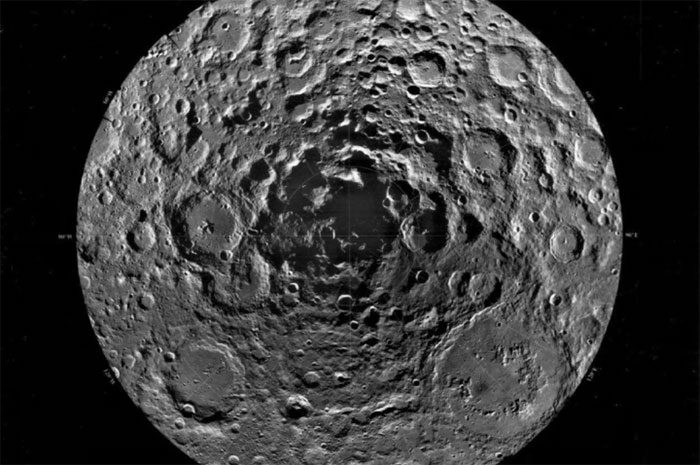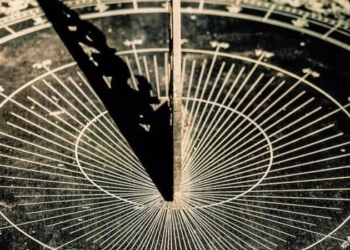The United States and China aim to establish a permanent base at the Moon’s South Pole, while India and Russia are competing to be the first nation to land on the Moon.
Speaking at the Kennedy Space Center in Florida on August 8, Bill Nelson expressed concerns that China could occupy the South Pole region of the Moon if Chinese astronauts arrive there first. “Of course, I don’t want China to send people to the South Pole first and then claim it as their territory,” he stated.
The Race for the Moon’s South Pole
According to Nelson, the US and China are racing to see who will be the first to reach the frozen water reserves trapped at the Moon’s South Pole.
“We need to protect the interests of the international community. If we find a substantial amount of water that can be used for future crews and spacecraft, we want to ensure that resource is available to everyone and not just to the one who claims it,” Nelson added.

Many countries are targeting the Moon’s South Pole. (Photo: Getty)
Potential landing sites and resource utilization opportunities at the Moon’s South Pole may be limited. The reason is that satellite imagery shows the landscape is significantly different from areas previously chosen for landing during earlier missions.
“The photos of the South Pole do not resemble what we saw where Neil Armstrong and Buzz Aldrin landed. The South Pole has many deep craters. Due to the angle of sunlight, most of those craters are completely shrouded in darkness, which significantly reduces the landing area,” Nelson explained.
However, space policy expert Brian Weeden, director of program planning at the Secure World Foundation, stated that the US and China “do not necessarily have to compete.” “This is not a race, as not only the US and China will go to the Moon; many countries will also go there for various reasons.”
The South Pole of the Moon is vast, providing enough space for multiple exploration groups. He dismissed the NASA director’s opinion that whoever gets there first will “win” the race, as “no matter who lands on the Moon first, other nations will continue to arrive there.”
China has been developing launch vehicles and spacecraft with the goal of landing its astronauts on the Moon by 2030. The international lunar research station led by China and the US Artemis program both aim to establish a long-term human presence at the Moon’s South Pole.
Russia and India Launch Lunar Missions
Meanwhile, Russia and India are competing to become the first country to conduct a mission searching for signs of water on the Moon using robotic landers. Both Russia’s Luna 25 and India’s Chandrayaan 3 are scheduled to land on August 23.
Russia successfully launched the Luna-25 spacecraft, marking its return to lunar exploration after nearly 50 years. (Source: Roscosmos)
On the morning of August 11, Moscow time, Russia’s Federal Space Agency, Roscosmos, successfully launched the Luna-25 spacecraft, opening a new phase in Moscow’s lunar exploration program. This is also Russia’s first lunar mission in 47 years since 1976.
It is expected, Luna-25 will land at the Moon’s South Pole on August 21. This spacecraft will explore areas that have never been accessed by humans.
Despite Moscow’s successful launch, NASA’s director dismissed Russia’s role as a competitor in the space race. He questioned Russia’s readiness to send astronauts to the Moon before 2030.
NASA has also outlined progress in the Artemis II mission – a four-member crew that marks NASA’s first crewed lunar journey. This mission is expected to begin in 2024. It will also be the second launch in the Artemis program, a multinational initiative aimed at establishing “a long-term human presence on the Moon.” Previously, in 1972, NASA’s Apollo program successfully reached the Moon.

The SLS rocket and Orion spacecraft on the launch pad in Florida during the Artemis I mission. (Photo: Getty)
According to Weeden, a more important question than the competition between nations to reach the Moon is whether they share a common interpretation of international law, as current space treaties often contain very broad principles.
28 Countries Sign the Artemis Accords
The Artemis Accords were launched on October 13, 2020, aiming for peaceful use of space and cooperation, with eight signatory countries including the United States, Australia, Canada, Japan, Luxembourg, Italy, the United Kingdom, and the United Arab Emirates (UAE). In November 2020, Ukraine joined the accord. In May 2021, South Korea became the 10th member. In June 2021, New Zealand and Brazil were the next two countries to sign the Artemis Accords.
To date, 28 countries have signed the Artemis Accords, led by the United States.
China was not invited to join the cooperation because NASA is not allowed to sign any bilateral agreements with the country. Russia claims that the accord initiated by the US is “politicized” and “overly centered on the US.”
Other countries like Germany, France, and India have also refused the accords, believing that resources in space should be off-limits for any nation’s economic use.
China and Russia, along with several other nations, have expressed concerns that the agreement could restrict their activities on the Moon. While the treaty states that no nation has the right to claim sovereignty over lunar territories, it does not specify how the principle of non-appropriation applies to space resources, such as the rights to extract, own, and utilize ice on the Moon.
In Weeden’s view, the concept of a “race to the Moon” arises partly from international concerns about China’s rapid rise as a space power.
“For a long time, the US thought they were ahead of China in space technology. This is no longer true. The relative advantage of the US is shrinking, and people worry that one day it could reduce to zero,” he said.
Additionally, there are concerns that China is using its space capabilities as a “soft power” to influence other countries and build global clout. This is demonstrated by Beijing’s continuous invitations to partners for scientific research and sending its astronauts on missions to the Tiangong space station.




















































